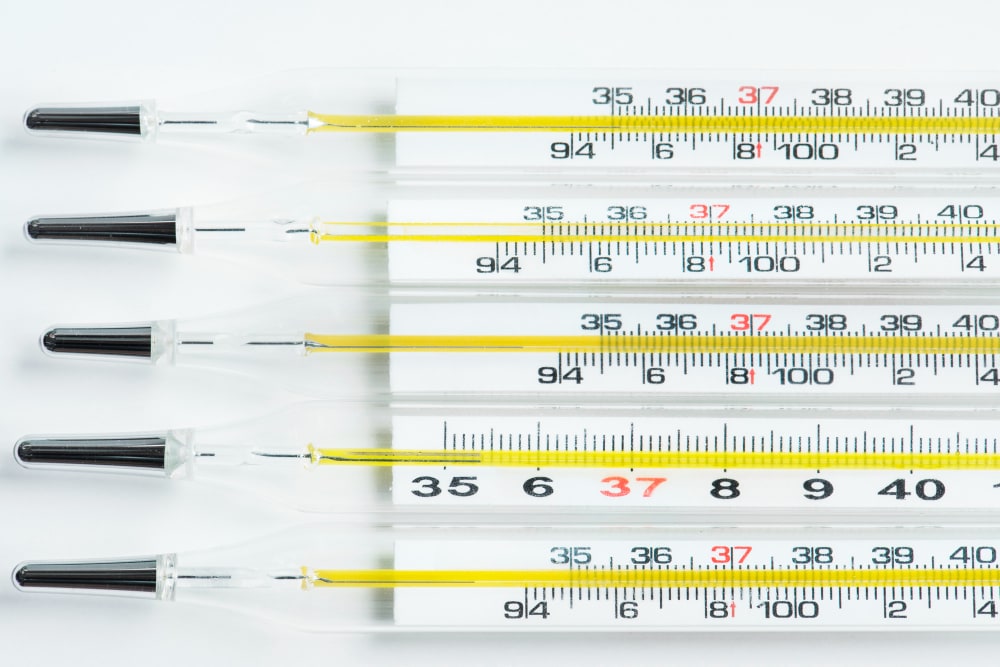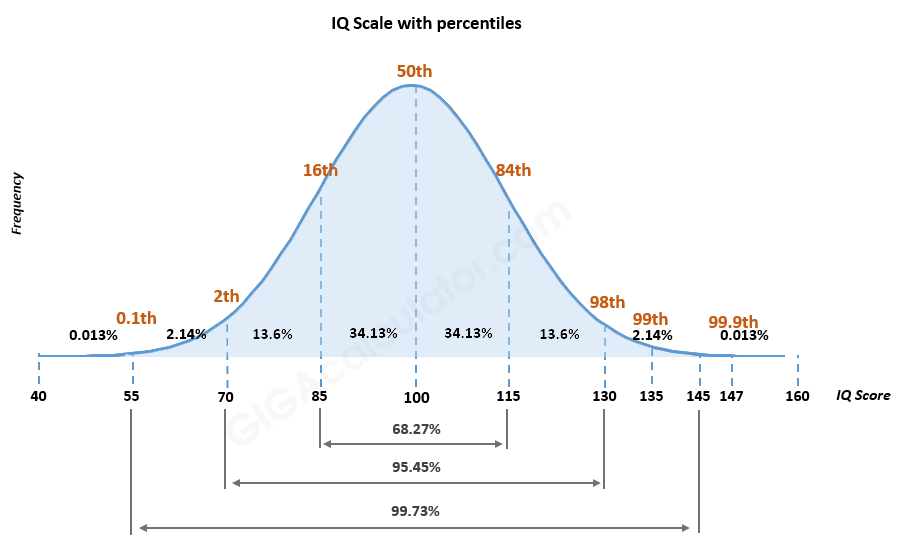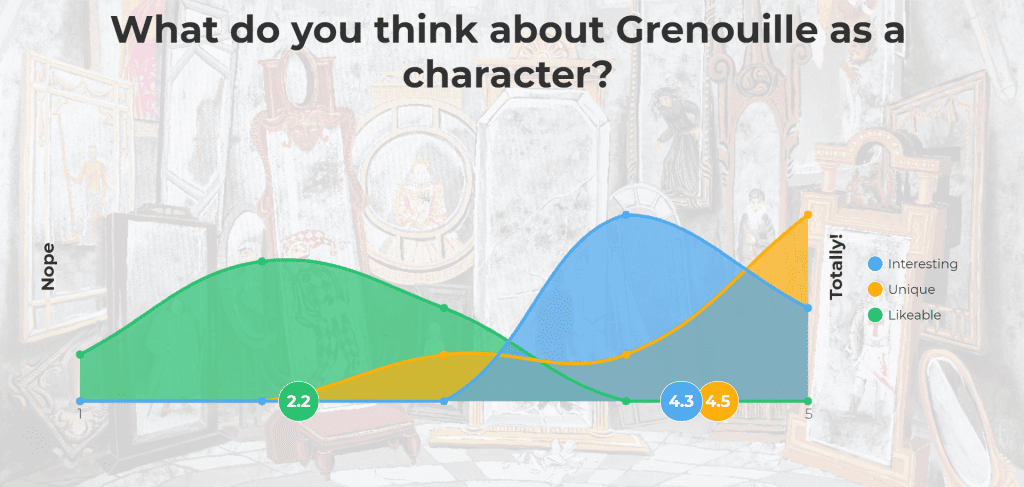Heute tauchen wir ein in das Konzept von Intervallmessung – ein Eckpfeiler in der Welt der Statistik, der vielleicht komplex klingt, aber unglaublich interessant und überraschend relevant für unser tägliches Leben ist.
Von der Zeitmessung bis zur Temperaturmessung spielen Intervallskalen eine entscheidende Rolle. Lassen Sie uns dieses Konzept gemeinsam entschlüsseln und dabei sein Wesen, seine einzigartigen Merkmale, Vergleiche mit anderen Skalen und Beispiele aus der Praxis untersuchen!
Inhaltsverzeichnis
- Was ist eine Intervallmessung?
- Hauptmerkmale der Intervallmessung
- Beispiele für Intervallmessungen
- Vergleich von Intervallskalen mit anderen Skalentypen
- Werten Sie Ihre Forschung mit interaktiven Bewertungsskalen auf
- Fazit
Tipps für eine effektive Umfrage
Was ist eine Intervallmessung?
Die Intervallskalenmessung ist eine Art Datenmessskala, die in den Bereichen Statistik und Forschung verwendet wird, um den Unterschied zwischen Entitäten zu quantifizieren. Es ist eine der vier Ebenen der Messskalen neben Nominal-, Verhältnisskalen und Beispiel für eine Ordinalskala.

Es ist in vielen Bereichen wie der Psychologie, der Lehre und der Gesellschaftsforschung wirklich nützlich, weil es uns hilft, Dinge wie die Intelligenz einer Person (IQ-Werte), wie heiß oder kalt es ist (Temperatur) oder Daten zu messen.
Hauptmerkmale der Intervallmessung
Die Messung mit Intervallskalen zeichnet sich durch besondere Eigenschaften aus, die sie von anderen Arten von Messskalen unterscheiden. Das Verständnis dieser Merkmale ist entscheidend für die ordnungsgemäße Verwendung von Intervallskalen in der Forschung und Datenanalyse. Hier sind die wichtigsten Funktionen:
Überall gleichmäßige Schritte (gleiche Intervalle):
Das Besondere an Intervallskalen ist, dass der Abstand zwischen zwei beliebigen Zahlen nebeneinander immer gleich ist, unabhängig davon, wo man sich auf der Skala befindet. Dadurch ist es wirklich nützlich zu vergleichen, wie viel mehr oder weniger eine Sache im Vergleich zu einer anderen ist.
- Beispielsweise ist der Sprung von 10 °C auf 11 °C genau das Gleiche wie der Sprung von 20 °C auf 21 °C, wenn es um die Temperatur geht.
Null ist nur ein Platzhalter (willkürlicher Nullpunkt):
Bei Intervallskalen bedeutet die Null nicht „nichts da“. Sie ist lediglich ein Punkt, von dem aus mit dem Zählen begonnen wird, nicht wie bei anderen Skalen, wo die Null bedeutet, dass etwas völlig fehlt. Ein gutes Beispiel ist 0 °C bedeutet nicht, dass es keine Temperatur gibt, sondern nur, dass dort Wasser gefriert.

Nur Addieren und Subtrahieren:
Mit Intervallskalen lassen sich Zahlen addieren oder subtrahieren, um die Differenz zwischen ihnen zu ermitteln. Da Null aber nicht „keine“ bedeutet, lässt sich durch Multiplikation oder Division nicht sagen, dass etwas „doppelt so heiß“ oder „halb so kalt“ ist.
Kann nicht über Verhältnisse sprechen:
Da Null auf diesen Skalen nicht wirklich Null ist, ergibt die Aussage „doppelt so viel“ keinen Sinn. Das liegt daran, dass uns ein echter Ausgangspunkt fehlt, der „keine“ bedeutet.
Zahlen, die Sinn machen:
Auf einer Intervallskala ist alles in Ordnung, und Sie können genau erkennen, um wie viel mehr eine Zahl im Vergleich zu einer anderen ist. Dadurch können Forscher ihre Messungen organisieren und darüber sprechen, wie groß oder klein die Unterschiede sind.
Beispiele für Intervallmessungen
Die Intervallskalenmessung bietet eine Möglichkeit, Unterschiede zwischen Elementen mit gleichem Abstand zwischen Werten, aber ohne echten Nullpunkt zu quantifizieren und zu vergleichen. Hier einige Beispiele aus dem Alltag:
1/ Temperatur (Celsius oder Fahrenheit):
Die Temperaturskalen sind klassische Beispiele für Intervallskalen. Der Temperaturunterschied zwischen 20 °C und 30 °C entspricht dem Unterschied zwischen 30 °C und 40 °C. 0 °C oder 0 °F bedeuten jedoch nicht, dass keine Temperatur vorliegt; es handelt sich lediglich um einen Punkt auf der Skala.
2/ IQ-Werte:
Intelligenzquotienten (IQ) werden auf einer Intervallskala gemessen. Die Unterschiede zwischen den Werten sind konstant, es gibt jedoch keinen echten Nullpunkt, an dem Intelligenz fehlt.

3/ Kalenderjahre:
Wenn wir Jahre zur Zeitmessung verwenden, arbeiten wir mit einer Intervallskala. Die Lücke zwischen 1990 und 2000 ist dieselbe wie zwischen 2000 und 2010, aber kein „Nulljahr“ repräsentiert die Abwesenheit von Zeit.
4/ Tageszeit:
Ebenso ist die Tageszeit auf einer 12- oder 24-Stunden-Uhr eine Intervallmessung. Das Intervall zwischen 1:00 und 2:00 Uhr ist dasselbe wie zwischen 3:00 und 4:00 Uhr. Mitternacht oder Mittag stellen keine Abwesenheit von Zeit dar; es ist lediglich ein Punkt im Zyklus.
5/ Standardisierte Testergebnisse:
Die Ergebnisse von Tests wie dem SAT oder GRE werden auf einer Intervallskala berechnet. Die Punktedifferenz zwischen den Ergebnissen ist gleich, was einen direkten Vergleich der Ergebnisse ermöglicht. Ein Ergebnis von null bedeutet jedoch nicht „keine Kenntnisse“ oder Fähigkeiten.

Diese Beispiele veranschaulichen, wie Intervallskalen in verschiedenen Aspekten des täglichen Lebens und in der wissenschaftlichen Forschung eingesetzt werden und präzise Vergleiche ermöglichen, ohne sich auf einen echten Nullpunkt zu verlassen.
Vergleich von Intervallskalen mit anderen Skalentypen
Nominalskala:
- Was es tut: Ordnet Dinge einfach in Kategorien oder Namen ein, ohne zu sagen, was besser ist oder mehr hat.
- Ejemplo: Obstsorten (Apfel, Banane, Kirsche). Man kann nicht sagen, dass ein Apfel „mehr“ ist als eine Banane; sie sind einfach anders.
Ordnungsskala:
- Was es tut: Ordnet die Dinge einer Reihenfolge zu, sagt uns aber nicht, wie viel besser oder schlechter das eine im Vergleich zum anderen ist.
- Ejemplo: Rennpositionen (1., 2., 3.). Wir wissen, dass der 1. Platz besser ist als der 2. Platz, aber nicht um wie viel.
Intervall-Skala:
- Was es tut: Ordnet die Dinge nicht nur der Reihenfolge nach, sondern zeigt uns auch den genauen Unterschied zwischen ihnen an. Allerdings gibt es keinen echten Ausgangspunkt von Null.
- Ejemplo: Temperatur in Celsius wie bereits erwähnt.
Verhältnisskala:
- Was es tut: Wie die Intervallskala ordnet sie Dinge ein und zeigt uns den genauen Unterschied zwischen ihnen an. Sie hat aber auch einen echten Nullpunkt, d. h. „nichts“ von dem, was wir messen.
- Ejemplo: Gewicht. 0 kg bedeutet, dass es kein Gewicht gibt, und wir können sagen, dass 20 kg doppelt so schwer sind wie 10 kg.
Hauptunterschiede:
- Nominal benennt oder beschriftet Dinge einfach ohne Reihenfolge.
- Ordinal bringt die Dinge in Ordnung, sagt aber nicht, wie weit diese Ordnungen auseinander liegen.
- Intervall gibt uns die Entfernung zwischen Punkten klar an, jedoch ohne echte Null, sodass wir nicht sagen können, dass etwas „doppelt“ so viel ist.
- Verhältnis gibt Das ist für uns alles, was das Infointervall tut, und außerdem hat es eine echte Null, sodass wir Vergleiche wie „doppelt so viel“ anstellen können.
Werten Sie Ihre Forschung mit interaktiven Bewertungsskalen auf
Die Einbindung von Messungen in Ihre Forschung oder Feedback-Erfassung war noch nie so einfach wie mit AhaSlides. BewertungsskalenOb Sie Daten zur Kundenzufriedenheit, zum Mitarbeiterengagement oder zur Publikumsmeinung erfassen – AhaSlides bietet eine benutzerfreundliche Plattform, die den Prozess vereinfacht. Erstellen Sie schnell individuelle Bewertungsskalen, die perfekt zu Ihrer Umfrage oder Studie passen. Darüber hinaus ermöglicht die Echtzeit-Feedback-Funktion von AhaSlides die sofortige Interaktion und Einbindung Ihres Publikums. Das macht die Datenerfassung nicht nur effizient, sondern auch ansprechend.

🔔 Sind Sie bereit, Ihre Forschung mit präzisen und interaktiven Bewertungsskalen zu verbessern? Entdecken Sie jetzt AhaSlides' Template und beginnen Sie noch heute mit Ihrer Reise zu besseren Erkenntnissen!
Fazit
Die Verwendung von Intervallskalen kann die Art und Weise, wie wir Daten in der Forschung erfassen und analysieren, grundlegend verändern. Ob Sie Kundenzufriedenheit bewerten, Verhaltensänderungen untersuchen oder den Fortschritt im Zeitverlauf verfolgen – Intervallskalen bieten eine zuverlässige und unkomplizierte Methode. Der Schlüssel zur Gewinnung aussagekräftiger Daten liegt in der Auswahl der richtigen Tools und Skalen für Ihre Studie. Nutzen Sie die Intervallskalenmessung und steigern Sie die Genauigkeit und Aussagekraft Ihrer Forschung.
Ref: formulare.app | GraphPad | QuestionPro







